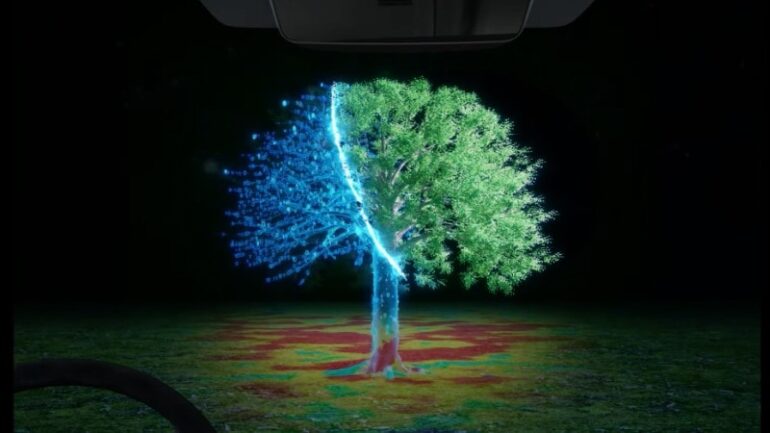TL;DR:
- Purdue University unveils HADAR, a thermal imaging system blending machine learning with infrared imagery.
- HADAR revolutionizes thermal imaging, mimicking daylight images with exceptional precision.
- Existing technologies like sonar and LiDAR struggle with interference, limiting their use in proximity.
- HADAR’s advanced approach employs hyperspectral thermal imaging to capture geometric textures in weak infrared signals.
- Three attributes—temperature, emissivity, and texture—are disentangled using machine learning for clearer images.
- Challenges remain, including bulkiness and cost of available hyperspectral thermal imagers.
- HADAR holds the potential for autonomous navigation, robotics, healthcare monitoring, and wildlife observation.
Main AI News:
The realm of thermal imaging is experiencing a groundbreaking transformation with the emergence of a cutting-edge system that seamlessly integrates machine learning with infrared imagery. Recently unveiled by a team of adept researchers at Purdue University in the United States, this revolutionary technology, named HADAR, holds the potential to bestow passive thermal imaging systems with the remarkable ability to produce images akin to those captured in broad daylight. Spearheaded by the ingenuity of Zubin Jacob and his dedicated colleagues, HADAR is poised to usher in a new era of clarity and vibrancy to the world of thermal imaging.
In an era characterized by low-visibility and nighttime conditions, our capacity to discern and classify images has been radically enhanced by technologies like sonar, radar, and LiDAR. However, these systems, reliant on the emission and detection of signals (be it sound, radio waves, or light), often encounter interference when deployed in close proximity, rendering them unsuitable for certain emerging applications such as self-driving vehicles.
Enter thermal imaging—a potential solution to this conundrum—offering the ability to discreetly observe nighttime scenes through the infrared radiation emitted by objects. Nevertheless, conventional infrared cameras have long grappled with an inherent limitation: the images they capture lack fine features and exhibit an unsettling blur. Consequently, their efficacy as replacements for technologies like LiDAR has remained limited.
A Pioneering Breakthrough Jacob’s team, however, presents a pioneering advancement in the field of thermal imaging. Named Heat-Assisted Detection and Ranging (HADAR), this breakthrough technology has attained a level of precision that can decipher geometric textures within feeble, dispersed infrared signals.
The cornerstone of this achievement lies in the seamless synergy of thermal physics and machine learning, coupled with the introduction of spectral resolution to thermal imaging. The HADAR system harnesses hyperspectral thermal imaging—a methodology that captures thermal images of a scene across hundreds of distinct colors in the thermal infrared spectrum.
Elevating the Standards While the human visual system processes colors through a trifecta of red, green, and blue photoreceptors, HADAR takes a distinct approach, constructing infrared images based on three pivotal attributes of the observed objects: temperature (T), emissivity (e), which varies with material composition, and texture (X), responsible for generating distinct thermal radiation patterns.
These attributes, concealed within the cluttered raw data of the emitted infrared light, are skillfully disentangled by HADAR’s “TeX vision” approach. Through a sophisticated algorithm that imparts distinct “colors” to various components of the scene, the system builds a semantic library replete with suitable colors for different materials. This approach effectively mirrors the optical appearance of these materials under daylight conditions, effectively enabling HADAR to depict low-visibility and nighttime scenes as if they were illuminated by broad daylight.
Future Prospects and Implications While acknowledging the journey that lies ahead, the researchers acknowledge the current challenges posed by the bulkiness, sluggishness, and cost of available hyperspectral thermal imagers. Nevertheless, they hold an optimistic outlook, foreseeing the potential resolution of these obstacles in the coming years, culminating in the creation of high-speed, compact, and lightweight thermal imagers specifically designed for HADAR.
This transformative technology portends a myriad of applications across various domains. From autonomous navigation and robotics to smart healthcare monitoring, especially during nighttime hours, HADAR’s potential knows no bounds. The realm of wildlife monitoring, too, stands to benefit, enabling the observation of nocturnal wildlife that remains elusive to conventional cameras. As HADAR continues its evolution, its impact promises to reverberate across industries, igniting a new era of precision and clarity in thermal imaging technology.
Conclusion:
The advent of HADAR marks a significant stride in thermal imaging technology. The fusion of machine learning with infrared precision holds the promise of reshaping various industries. From enhancing autonomous systems to revolutionizing healthcare monitoring and wildlife observation, HADAR’s potential impact underscores a new era of clarity and sophistication in the thermal imaging market. Companies positioned to harness and integrate this innovation could gain a competitive edge and redefine industry standards.

